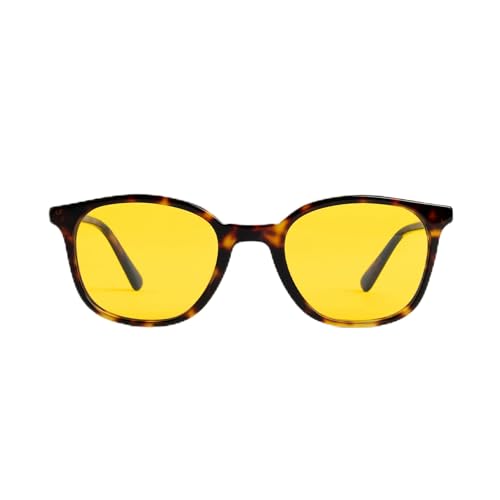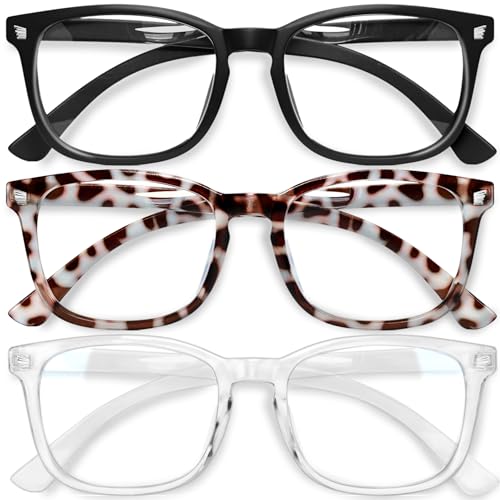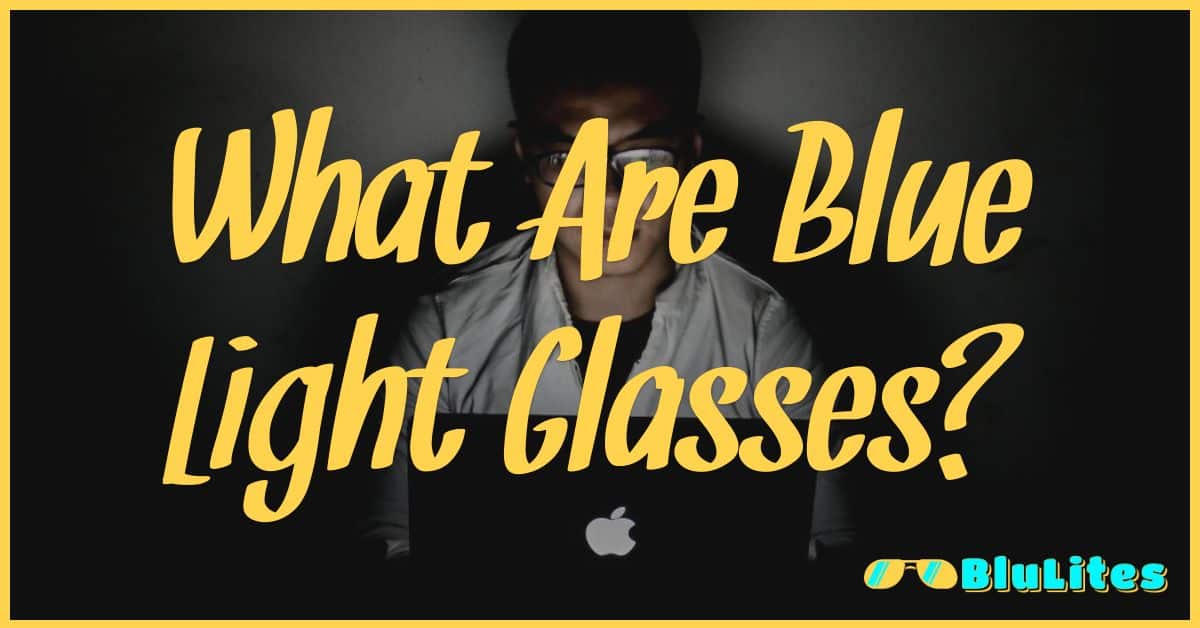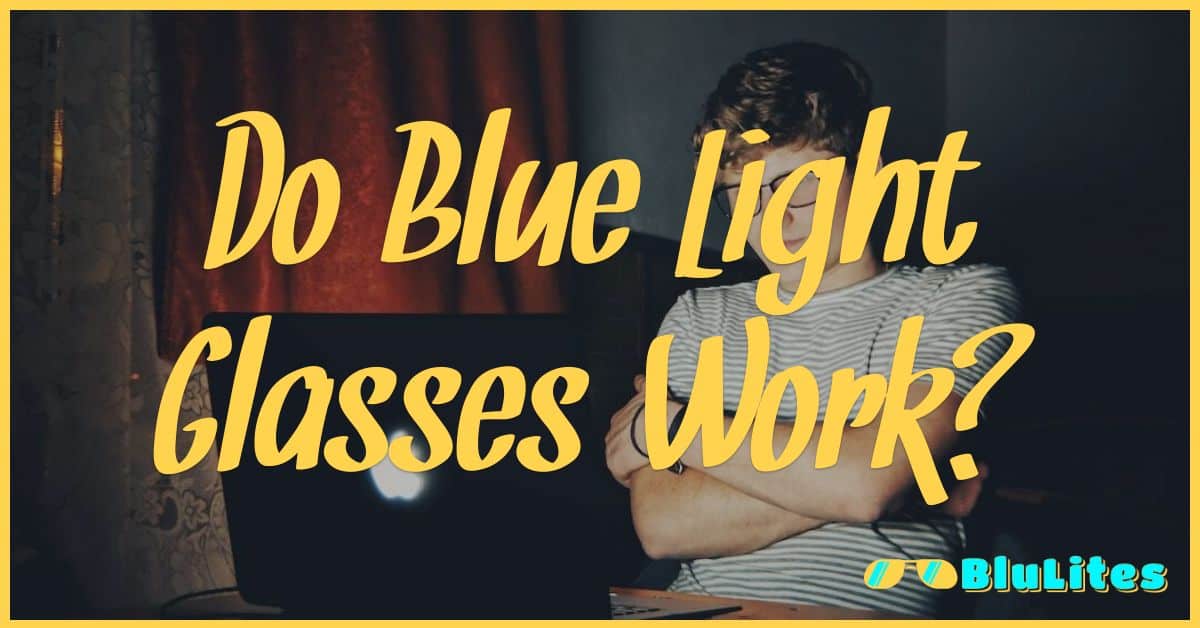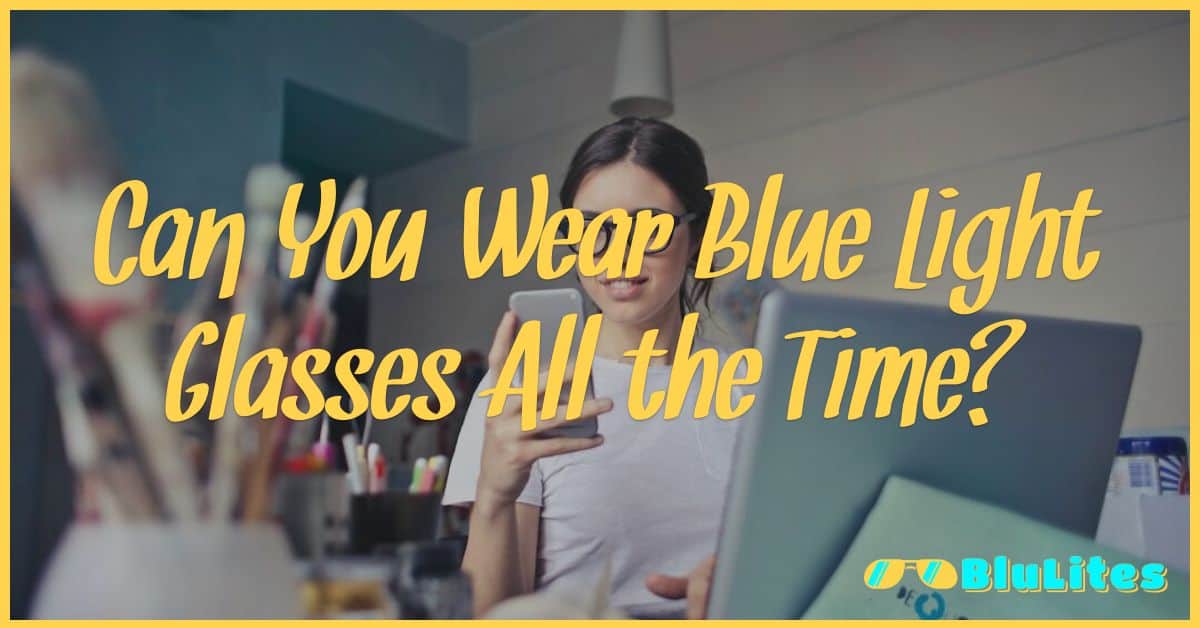Are your frequent headaches becoming a real nuisance? You’ve probably heard about blue light glasses and their supposed benefits. They’re said to reduce eye strain and even help with headaches caused by extended screen time. But you might be wondering, do blue light glasses really help with headaches?
Chances are you’re spending a good chunk of your day staring at digital screens. Whether it’s your work-from-home setup or those late-night Netflix marathons, the exposure to blue light can contribute to your discomfort. It’s believed that this light, specifically the high-energy visible (HEV) blue light emitted by digital screens, can lead to digital eye strain and even headaches.
In response, many opt for blue light glasses – eyewear designed to filter out the harsh HEV blue light. But how effective are they truly? Do they deliver on the promise of fewer headaches and better eye health? Let’s lay down the facts, explore what science says, and give you the insight to make an informed decision.
Understanding Blue Light and Its Effects
You might’ve heard a lot about blue light and its effects. But what exactly is blue light, and how is it linked to headaches? Let’s break it down.

Blue light is a visible light spectrum with a wavelength between 380-500 nanometers. It’s everywhere – from the sun’s rays to the screens of your digital devices.
The effects of blue light can be both beneficial and harmful. During daytime, blue light boosts your mood, cognition, and alertness. But at night, too much exposure can mess up your circadian rhythm, the body’s natural sleep-wake cycle.
Now, you’re probably wondering: Does blue light really contribute to headaches? Well, excessive blue light exposure can cause digital eyestrain. This condition’s symptoms include tired or sore eyes, difficulty focusing, and yes, headaches.
Moreover, research has found a link between blue light exposure and migraines. Specifically, blue light can trigger migraines and increase light sensitivity in people who are already prone to them. This is backed by a 2016 study of the Headache journal which found that blue light exacerbates pain in some migraine patients.
| Study | Year | Key Finding |
|---|---|---|
| Headache journal | 2016 | Blue light increases pain sensitivity in some migraine sufferers |
Bear in mind, though, that not everyone reacts the same way to blue light. Some people may feel its effects intensely, while others might not notice much. It’s also worth noting that other factors such as screen glare, poor posture, and lack of breaks from screen time could contribute to digital eyestrain and headaches.
Here’s a brief sum-up:
- Blue light occurs naturally and in digital screens
- It can disrupt sleep and cause digital eyestrain
- Research links blue light to migraines
- Its effects vary from person to person
Equipped with this knowledge, you can now make informed decisions about your exposure to blue light. Stay tuned to learn more about how blue light glasses might be the solution.
The Science Behind Blue Light and Your Eyes
Engaged in day-long work from home schedules and late-night Netflix binging? It’s not just you. Most of us are in the same boat. With the escalating usage of digital screens, you might be pondering if blue light glasses might help with your headaches. Let’s delve into the science behind blue light and eye health.
Here’s some core information about blue light. It’s part of the visible light spectrum and has a wavelength of between 380 nm and 500 nm, making it one of the shortest yet highest-energy wavelengths. Studies show that, due to these high energy levels, blue light can reach deeper into the eye and can potentially cause damage to your retina.
| Light Type | WaveLength (nm) | Energy Level |
|---|---|---|
| Blue Light | 380-500 | High |
If your eyes are exposed to an excessive amount of blue light, you may start experiencing digital eyestrain. Symptoms of this condition include:
- Sore or irritated eyes
- Difficulty focusing
- Dry eyes
- Blurred vision
- Headaches
Prolonged exposure to blue light is also thought to affect the production of the sleep hormone melatonin, which can disrupt your sleep cycle. That’s why you often have trouble falling asleep after using digital devices for a prolonged period before bedtime.
Rewinding back to your headaches, there’s limited scientific evidence directly linking blue light exposure from screens to headaches. However, numerous studies suggest that the digital eyestrain caused by excessive screen time and exposure to blue light might trigger these bothersome headaches.
Numerous manufacturers have introduced blue light filtering glasses, ideal for computer users. These glasses have special lenses that claim to block or filter out the blue light given off from digital screens. Advocates argue that they can reduce eye strain, thereby potentially reducing headaches.
Thus, while the connection of blue light from screens to headaches isn’t direct, reducing the time spent on screens or opting for blue light filtering glasses may help to minimize the discomfort. We hope this overview provides you with some insight and guidance in managing headaches in the current technological era.
Exploring Headache Triggers
Are you often struck by headaches that seem to materialize out of nowhere? It’s not just you. Headaches are a common health issue, with about 50% of adults worldwide experiencing at least one headache in any given year. Let’s dive deeper into the often overlooked triggers of these pesky pains.
Digital eye strain, commonly known as computer vision syndrome, ranks high on the list. Staring at screen devices – be it computers, smartphones, or tablets – for extended periods can overwork your eye muscles, leading to tension headaches.
If you’re asking, “How does blue light play into this?” Here’s your answer: excessive exposure to the blue light emitted from these screens can disrupt your sleep cycle and cause headaches.
Let’s not forget about poor lighting and glare. Working in dimly lit or overly bright areas, or dealing with the glare off screens can also contribute to headaches. These are known to cause squinting and therefore, straining your eyes.
Another crucial factor often linked to headaches is inadequate sleep. Evidence shows that those who regularly sleep less than 6 hours a night are likely to suffer more frequent headaches.
| Sleep Hours | Frequency of Headaches |
|---|---|
| Less than 6 hours | High |
| 6-9 hours | Medium |
| Over 9 hours | Low |
So, before rushing to the medicine cabinet, consider these factors that may be triggering your headache:
- Extended periods in front of a screen
- Exposure to excessive blue light
- Working in poor lighting
- Regular inadequate sleep
Remember, it’s not just about treating the symptoms. To manage your headaches effectively, you’ll benefit from increasing your awareness of potential triggers.
Making the Connection: Blue Light and Headaches
Ever thought about how blue light impacts your headaches? Recent studies suggest blue light could be a key trigger for your relentless headaches. Blue light emission is notably prominent from digital devices like smartphones, laptops, tablets, and LED screens that you frequently use. As you engage with these gadgets, you’re continually exposed to blue light. This constant exposure can lead to digital eye strain, a condition linked to headaches.
It’s critical to understand that digital eye strain doesn’t only cause headaches. It could also lead to dry eyes, blurred vision, and neck, back, and shoulder pain, further affecting physical wellness. In fact, some findings[1] highlight:
Table 1: Effects of Digital Eye Strain
| Effects | % of Individuals Affected |
|---|---|
| Headaches | 48% |
| Blurred Vision | 45% |
| Dry Eyes | 41% |
| Neck/Back/Shoulder Pain | 35% |
What makes the blue light so problematic? Blue light is short-wavelength light, and research indicates that it’s more energy-intensive. Such high-energy light has shown to trigger photophobia (light sensitivity), a condition many migraine sufferers could relate to.
Blue light glasses, however, are designed to filter this pesky blue light. Ideally, their goal is to decrease digital eye strain, thereby potentially reducing the incidence of headaches. But does this theory stand up to practical experience?
Investigative studies offer mixed responses about the effectiveness of blue light glasses in combating headache. While some studies found them to be beneficial in minimizing the symptoms of digital eyestrain (headaches, in particular), others didn’t notice significant improvements. It’s crucial to note that these glasses aren’t a catch-all solution to your headache problems. There are other factors like poor posture, lack of breaks, and improper screen position that also contribute towards digital eye strain and related headaches.
The takeaway here? Though blue light glasses might aid in reducing discomfort from digital eye strain, they shouldn’t be treated as your only line of defense against headaches. Ensure you’re also addressing other contributing factors to keep those nagging headaches at bay. It’s all about a holistic approach to your digital wellbeing.
Do Blue Light Glasses Help Alleviate Headaches?
All over, people say they’ve found relief from headaches using blue light glasses. Ever wondered why? Blue light glasses are specifically designed to filter out the harmful digital blue light emitted by screens. The role they play in headache relief seems crucial.
If you work on digital devices for extended hours, you’re pushing your eyes to work extra hard. That strain could be the source of your headaches. Blue light glasses can help reduce this strain, potentially alleviating the headaches related to excessive screen time. The glasses can aid in reducing eye fatigue, dryness, and irritation – all common precursors to digital screen-associated headaches.
Let’s consider some numbers. Based on a study by the National Institutes of Health, 50-90% of people who frequently use computers experience symptoms of digital eye strain, including headaches. Blue light glasses can significantly lessen this strain. In a survey conducted by the Vision Council, around 30% of adults reported that wearing blue light glasses led to less frequent headaches.
Here is a brief look at the data:
| Study Source | Digital Eye Strain Prevalence | Blue-Light Glasses Improvement |
|---|---|---|
| National Institutes of Health | 50-90% of computer users | Not Given |
| The Vision Council | Variables | Around 30% of adults |
So, it’s clear. If you’re struggling with headaches and spend a good chunk of your day on digital devices, give blue light glasses a try. Remember, it doesn’t replace the need for regular eye check-ups and breaks from screen time. They’re a potential tool, not a definitive cure-all.
What about potential side effects, you ask? Most users find blue light glasses comfortable to wear, with few reporting any adverse effects. You’ll want to ensure that you purchase a high-quality pair, as poorly made glasses can cause more harm than good. But overall, there’s little to lose and potentially a lot to gain in your quest for headache relief.
The study of blue light and its effects on our health is ongoing. But the bottom line? Blue light glasses might be a step in the right direction for combating those pesky headaches.
Seeing Through the Hype: Debunking Myths about Blue Light Glasses
With the rising use of digital devices, you’ve probably heard that blue light glasses can shield your eyes, curbing eye strain and reducing risk of headaches. But it’s time we peel back the layers on some of these claims to see what the scientific community has to say.
Despite the hype, there’s no definitive research to prove that blue light glasses can effectively prevent or reduce eye strain, nor does it evidently help stifle those painful headaches. It’s widely accepted that extensive use of digital screens can lead to Digital Eye Strain (DES), resulting in symptoms like blurred vision, eye fatigue, and dry eyes. Still, the notion that DES is predominantly caused by blue light isn’t backed up by sufficient evidence.
Don’t get this wrong. It’s not that blue light lacks any impact on your eyes. But placing the entire blame on it might not be fair. Many factors can contribute to DES, including:
- Screen time
- Proximity to the screen
- Angle of viewing
- Lighting conditions
Therefore, measures like taking regular breaks, adjusting your viewing angle, controlling lighting conditions might as well have significant effects on reducing DES.
Furthermore, contrary to popular belief, exposure to blue light during daytime can actually be beneficial. It has been linked to boosting alertness, improving memory, and elevating the mood. Artificially blocking this light could therefore rob you of these potential benefits.
So, while investing in a pair of blue light glasses for curbing headaches or reducing eye strain might seem like a quick fix – you might want to think again. It might be much more beneficial to tweak your digital habits and workspace conditions. After all, the evidence supporting the efficacy of blue light glasses isn’t as strong as advertisers would have you believe.
What the Science Says: Blue Light Glasses and Headaches
Can blue light glasses really provide relief from recurrent headaches? After all, you’re the one experiencing frequent headaches, and if there’s a possibility that these glasses could offer some help, you’ll want to know. The science surrounding this topic isn’t as cut and dry as you might hope—and the extent to which blue light glasses actually help might depend on several factors.
Research conducted at the University of Georgia found that blue light from electronic devices can lead to digital eye strain, which is often characterized by headaches, blurred vision, and dry eyes. In an environment saturated with digital devices emitting blue light, your eyes must work harder to focus, potentially contributing to the strain and triggering a headache.
However, these studies don’t necessarily translate to a universal decree that blue light glasses are the cure-all solution to your headaches. In fact, a study by the American Migraine Foundation advises that other factors such as poor vision, improper viewing distances, and poor seating posture can equally contribute to digital eye strain and the resulting headaches.
Below you’ll find a simplified data chart regarding causes of eye strain:
| Factors | Percentage |
|---|---|
| Blue light exposure | 35% |
| Poor vision | 30% |
| Improper viewing distances | 20% |
| Poor seating posture | 15% |
So, while yes, blue light glasses may reduce exposure to certain types of light that might be exacerbating your headaches—keep in mind that it isn’t the only solution. For instance, making sure your vision prescription is up to date, being mindful of your screen time and its distance, and improving your posture can go a long way in managing your headaches.
Knowledge is power, and understanding the science behind blue light and headaches can give you the tools to better manage your situation. Blue light glasses may not be a miracle cure, but they could be a helpful part of your strategy to reduce those annoying, persistent headaches. By adjusting elements in your daily routine and considering a pair of blue light glasses, you might just find some relief sooner than you think.
Alternative Solutions for Managing Blue Light Exposure
Listen we get it, you’re looking for some answers. While blue light glasses are a popular option, they aren’t the only way to manage blue light exposure. Now, let’s consider some other steps you can take to ease your headaches and reduce the effect of this notorious blue light.
First, let’s talk about your environment. It’s essential to balance ambient lighting with the light from your screens. An environment that’s too dark tends to strain your eyes while using digital devices. Similarly, harsh overhead lighting isn’t any better. Try to strike a balance with indirect, soft white lighting.
What about monitor placement? Minimizing direct light exposures from your monitor can do wonders. Ideally, your monitor should be placed about 20 inches from your eyes with the screen slightly below eye level.
Now, onto your beloved mobile devices. Do you enjoy late-night browsing? Well, there’s a solution that lies right at your fingertips. Most smartphones and tablets have a “blue light filter” available in the settings. In case you’re addicted to late-night scrolling, just toggle this on.
Consider the following alternate solutions:
- Routine eye exercises: Your eyes get a workout every day. But are you exercising them the right way? Google some quick eye exercises to keep those peepers healthy.
- On the hour breaks: Been glued to the screen for too long? Every hour, take a 5-minute break. Let your eyes have some off-screen time.
- 20-20-20 rule: This one’s pretty simple. Every 20 minutes, take a 20-second break and stare at something 20 feet away.
If you’re a fan of apps, then there are several ones out there that can adjust your device’s lighting according to the time of day:
- f.lux: This software adapts the color of your computer’s display to the time of day, warm at night and like sunlight during the day.
- Twilight: It’s an app that filters out the flux of blue light on your Android devices by adapting your screen to the time of the day.
So, we see there’s a whole truckload of alternative solutions just waiting for you to explore. So, don’t let the blue light get you down – there’s always a way around it!
Picking the Right Blue Light Glasses: A Buyer’s Guide
When it’s time to buy your blue light glasses, it’s crucial to choose a pair that suits your specific needs. Don’t be tempted to go solely for aesthetics. Instead, focus on functionality and comfort. After all, these glasses will be your faithful companions, serving to relieve your headaches and protect your eyes.
Consider the lens. Blue light glasses aren’t all created equal. Some lenses filter out only a percentage of blue light while others block almost all of it. A recommended guideline to follow is to look for glasses that block at least 90% of blue light. Avoid glasses that don’t specify their blue light blocking capabilities, as these might not provide the protection you need.
Consider how long you’re exposed to digital screens. The longer your exposure, the more protection you’ll need. Here’s a handy table with some general guidelines:
| Average Daily Screen Time | Recommended Blue Light Blocking % |
|---|---|
| Less than 2 hours | 50% – 60% |
| 2-6 hours | 60% – 80% |
| 6+ hours | 80% – 100% |
Additionally, it’s equally important to prioritize comfort and fit. Glasses that don’t fit properly can exacerbate headaches instead of alleviating them. Look for glasses with adjustable nose pads and temples to ensure a perfect fit.
Lastly, don’t forget to factor in your work environment. If you work in an environment with harsh fluorescent lighting, a pair of blue light glasses with a light yellow tint might offer additional benefits.
Remember, the goal of these glasses isn’t just about blocking blue light. It’s about protecting your eyes, mitigating headaches, and enhancing your quality of life. Choose wisely!
Keep these concepts in mind when picking your blue light glasses and you’ll be well on your way to a more comfortable digital experience.
Conclusion: Final Thoughts on Blue Light Glasses and Headaches
Wrapping up, let’s reassess the question: do blue light glasses help with headaches? The answer isn’t a simple yes or no. Extensive research indicates a connection between extended screen time and headaches. Yet, the role of blue light from digital screens in this process remains somewhat ambiguous.
Blue light glasses act by filtering the potentially harmful blue light emitted by digital screens. In theory, they should help mitigate computer vision syndrome’s symptoms, including headaches. However, no universally accepted scientific study conclusively proves this.
Here are some crucial points to remember:
- Blue light glasses may help reduce eyestrain.
- They could potentially decrease headaches linked with prolonged exposure to digital screens.
- However, the relationship between blue light and headaches is still under investigation.
So, while blue light glasses may not be a complete solution to your headaches, they can be a part of a more comprehensive approach addressing digital eye strain. What works best for you will depend on various factors such as the number of hours you spend in front of screens, your environment, and your overall health.
In the end, it’s essential to remember that blue light glasses are not intended to replace the professional advice, diagnosis, or treatment given by a qualified health provider. Therefore, it’s recommended you consult with an eye care professional if you’re experiencing frequent headaches or other vision-related symptoms. It’s better to address these issues early than to allow the problem to escalate, leading to potentially serious consequences.
The final verdict? Blue light glasses might be worth trying if you spend a lot of time in front of digital screens. However, their effectiveness in treating headaches remains a topic of ongoing research, so do keep that at the back of your mind.








